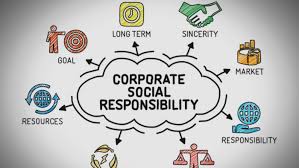
Performance Appraisal
Order Instructions:
Dear Admin,
Note: To prepare for this essay please read the required articles that is attached then answer the following questions:
Evaluate the findings of the authors in regards to the attitudes of teachers of different ethnic origins in Malaysia towards an outcome-oriented performance appraisal.
Analyze the relationship between teachers’ attitudes toward the system and their job satisfaction and professional commitment. Support your argument with evidence from the study and other real examples where possible.
Also,
1)The answer must raise appropriate critical questions.
2)Do include all your references, as per the Harvard Referencing System,
3)Please don’t use Wikipedia web site.
4)I need examples from peer reviewed articles or researches.
5)Turnitin.com copy percentage must be 10% or less.
Note: To prepare for this essay please read the required articles that is attached
Appreciate each single moment you spend in writing my paper
Best regards
SAMPLE ANSWER
PERFORMANCE APPRAISAL
Performance appraisals is a well-defined process that is used by manager consultants to scrutinize and evaluate an employee’s performance and work behavior in comparison to the current standards. This process is mostly used as a determination process for who is going to be fired, promoted or given specified training in an organization (Bernardin et al., 2013). However, performance appraisals are also defined as a ways to examine the weaknesses and strengths of employee’s according to standards set by an organization (Appelbaum et al., 2011).It involves the documentation of these results from the comparison. These results are then used to give feedback to the employees of the organization to show key areas that need improvements and why these improvements are needed.
This paper provides a detailed, comprehensive analysis to research that was conducted. The study was carried out to investigate the sentiment of teachers of different ethnic origins in Malaysia to a new outcome-oriented performance appraisal. That is the New Performance Appraisal System. Also investigated was the link between teacher’s sentiments towards the system and job satisfaction and professional commitment. The study was conducted in Malaysia using teachers from six randomly picked high schools in the state of Kedah.
The findings of the study indicated that there was no relationship between the ethnic origin and the attitude of the teachers to the new performance appraisal system. This means that the cultural orientation had in now any effect on the sentiments of the teachers about the new system. However, the findings also indicated that the teachers who received appropriate supervision and explanations of their performance, despite low results, showed a keen commitment to the profession as well as significant levels of job satisfaction.
The key issue of analysis in this paper is the relationship between the sentiments of the teachers to the system and the job satisfaction and keen commitment to the profession. Inferences drawn from the statistical evidence from the study shows that ethnic origin had no role to play on the attitudes of the teachers towards the system. This rules out the possibility of ethnic origins linking the two aspects of analysis in this paper.
The findings that are significantly to the critical areas of analysis in the discussion include, firstly, and there was no relationship between the ethnic origin of a teacher and their attitude towards the system. Secondly, the power distance of a group had a significant effect on the job satisfaction and commitment to the profession by the teachers. Thirdly, teacher’s sentiments are the determining factor of the level of engagement by the teachers to their profession. Fourthly, the main determinants of teacher’s job satisfaction are appropriate supervision and explanation. This follows that it is in the best interest of the organization had interactions between supervisors and their subordinates be at optimum levels. This help the teachers understand more their role in achieving the organization’s objectives and goals(Byrne et al., 2012). Lastly, appropriate feedback to the teachers despite low-performance appraisal results leads to an increased need for them to improve their performance. This in turn will cause a demonstration of significant performance from the teachers.
From the study, statistics shows that it is not necessary that the cultural group that is most collective will have a lower number of positive attitudes towards the system. However, it also indicates that the group with a large power distance will have realized fewer numbers of positive attitudes towards the new performance appraisal system. Thus, the greater the power distance in a given society, then the fewer the interactions between the supervisors and teachers. As justified explanations and proper supervision have a significant effect on the job satisfaction and commitment to the profession (Byrne et al., 2012). It follows that a large power distance indirectly affects the ability of appropriate supervision and explanation to the teacher about their profession. When the level of this ability lowers then the standard of commitment to the profession and job satisfaction lowers too. The relationship between the two areas of analysis and this paper is then established with regards to the group’s power distance.
The mere fact that the behavior of the teacher implicated towards the system has a significant effect on the ability of the teacher to improve his or her performance despite low appraisal results. This degree of behavior creates a connection between job satisfaction and professional commitment and attitude towards the system.
Into the analysis part, from the findings, we can infer some relationships between the teacher’s attitudes towards the system and the job satisfaction and commitment to the profession. Attitude towards the system has a significant relationship with the interactions between the supervisors and their subordinates. The interaction in turn is brought about due to the power distance in the given society. The study indicates that the larger a societies power distance than the lower the interactions between the supervisors and the teachers.
Moreover, the greater the number of interactions between the supervisors and the teachers leads to more appropriate delivery of the appraisal results to the teacher (Byrne et al., 2012). This goes hand in hand with the proper explanation and supervision. This means the need will rise for the teacher to improve significantly their performance. These sentiments indicate the aspect of job satisfaction and commitment to the profession.
This means that the effect starts with the power distance. The power distance then affects the interaction level of the two parties involved the performance appraisal process. The interaction in turn then leads to a significant improvement of performance by the teachers regardless of their attitudes of the system. This is achieved through appropriate explanations and supervision (DeNisi et al., 2011). When the appraisal results are communicated in a suitable manner to the teacher. Then the teacher will gain a sense of encouragement, regarding the poor evaluation results, and feel motivated to improve their performance. This will act as a reinforcement of the teacher’s commitment to the profession and lead to job satisfaction.
This means that all these aspects are intertwined to help achieve the success of each aspect in a structured manner. The overall success of the performance appraisal system can be determined when the attitudes of the teachers are changed to become favorable to the system through the acts of successive successful evaluation processes (Lawler et al., 2012).
In conclusion to the paper, we acknowledge the relationship between the fundamental entities of the appraisal and their dependency on one another to the realization of a successful performance appraisal system. The attitude of the teacher’s to the system is strongly related to job satisfaction and commitment to a profession by the teacher. The link between this two entities is via the power distance in the given society. The size of the power distance is the core determinant of the whole improvement of performance by the teacher as seen in the study.
The study confidently indicates the significance of small power distance to achieve maximum interactions between the teachers and their supervisors. This steers the motivational process that encourages improved performance that affects the level of job satisfaction. Thus, the degree of commitment to the profession is increased towards the positive direction. The study then in fewer words states the whole incorporation of the aspects mentioned in the text to achieve a satisfactory performance appraisal system.
References
Appelbaum, S. H., Roy, M., & Gilliland, T. (2011). Globalization of performance appraisals: theory and applications. Management Decision, 49(4), 570-585.
Bernardin, H. J., & Wiatrowski, M. (2013). Performance appraisal. Psychology and Policing, 257.
Byrne, Z. S., Pitts, V. E., Wilson, C. M., & Steiner, Z. J. (2012). Trusting the fair supervisor: the role of supervisory support in performance appraisals. Human Resource Management Journal, 22(2), 129-147.
https://onlinelibrary.wiley.com/doi/abs/10.1111/j.1748-8583.2012.00193.x
DeNisi, A. S., & Sonesh, S. (2011). The appraisal and management of performance at work.
Lawler, E. E., Benson, G. S., & McDermott, M. (2012). What Makes Performance Appraisals Effective? Compensation & Benefits Review, 44(4), 191-200.
We can write this or a similar paper for you! Simply fill the order form!












